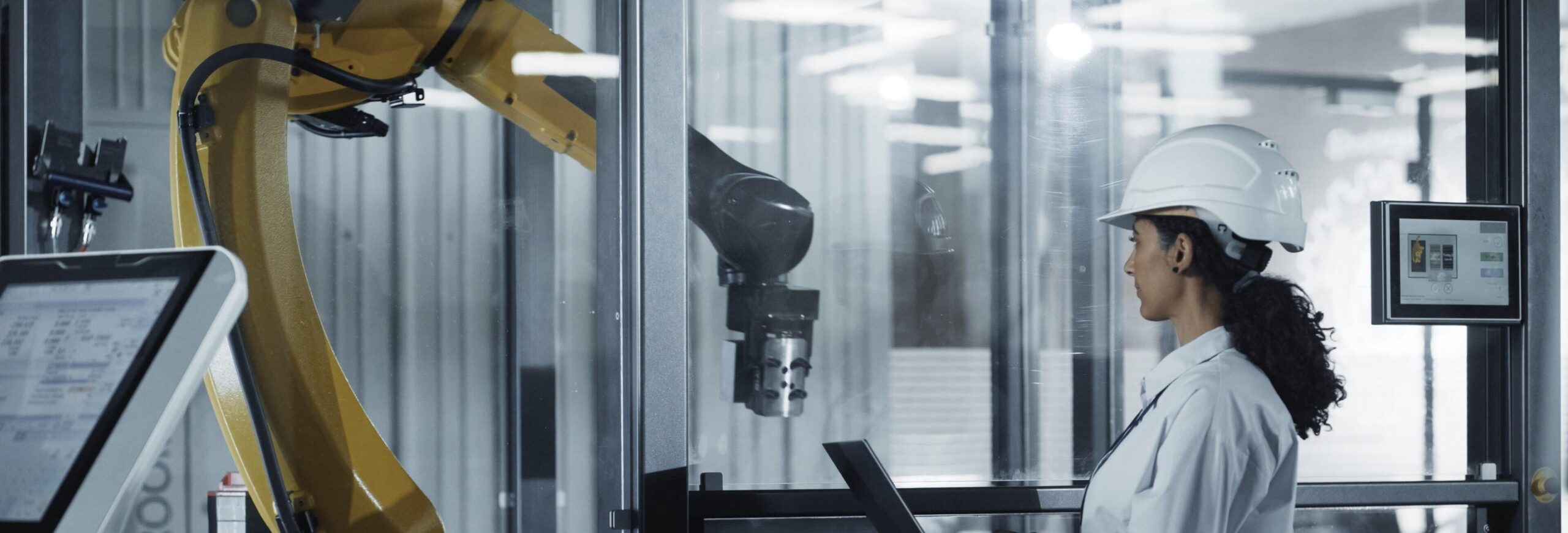
By Tyler Modelski 02/07/2025
What are the Standards & Regulations for Safety and Risk in Robot Machine Tending?
Over the past few months one of the most popular tools on our website has been the white paper Complete Guide to Robotic Machine Tending Projects.
Included in the paper is a list of the Safety and Risk Standards & Regulation Compliance Documents for Robotic Machine Tending which can help you identify and mitigate potential hazards associated with robotic operations.
Safety and risk assessments are essential when implementing CNC robotic machine tending installations to protect both factory personnel and equipment as well as avoid the potential for damage, injury, and liability.
These assessments evaluate potential hazards associated with robotic operations, such as moving parts, high-speed equipment, and unexpected stops or starts.
In robotic machine tending, risks can stem from the robot’s movements, the CNC or other machine’s operation, or both, which may pose risks of entrapment, collision, pinch points, or other dangerous situations.
Safety measures are crucial to mitigate these hazards and ensure safe operation and can include emergency stops, interlocked barriers, light curtains, and safety-rated robots and machine controllers.
A thorough risk assessment identifies specific dangers in the installation layout, robot reach, and interaction points between the robot and CNC machine. It also evaluates the potential for human interaction, especially in collaborative robot (cobot) setups.
Cobots often work near humans, so they are designed with safety features such as force and speed limitations, however the work environment must still be carefully reviewed. When risks are identified, controls like reduced robot speed, protective guarding, or programming adjustments can be implemented.
Regular training for operators on safety procedures, combined with scheduled maintenance checks, are also vital. By conducting comprehensive safety and risk assessments, your factory can create a safer CNC robotic machine tending environment that complies with industry safety standards, minimizes downtime due to safety incidents, and fosters a culture of safety within the facility.
Flexxbotics provides comprehensive safety mitigation as part of installation designs and offers both safety and risk assessments as an optional service for installations of the Flexxbotics solution.
Flexxbotics uses and recommends the following regulations and standards to minimize risks and ensure safe working environments for employees interacting with robots and machinery in CNC robotic machine tending: ANSI B11.0 and ANSI/RIA R15.06 along with EN ISO 12100, 10218-1, 10218-2, ISO/TS 15066, and OSHA Regulations CFR 1910 Subpart O for Machine Guarding.
Here’s the link where you can download the full Safety and Risk Standards & Regulation Compliance List.
Flexxbotics further enhances the safety capabilities of robotics in machine tending scenarios for both industrial and collaborative robots. For example with cobots we include safety scanner capabilities for enhanced motion detection enabling people to work even more safely side-by-side with the cobots in smart factory environments.
Flexxbotics bi-directional communication between the robots and the machines is also a significant safety enhancing factor. Direct communication to each machine’s controller provides multiple layers of safety redundancy to ensure the right actions are being taken or not taken.
Flexxbotics makes the robots ‘aware’ of each machine’s processing instructions including real-time status. For example, Flexxbotics ensures that each part is fixtured correctly and that the auto-door on the CNC is closed before initiating a cycle-start.
With custom third-party PLC integrations and I/O tie-ins, your personnel on the shop floor are exposed to robot/machine safety issues due to a lack of interoperable coordination meaning your company assumes unnecessary liability risk.
Flexxbotics delivers the highest safety levels possible in robotic machine tending. With Flexxbotics the robot is instructing the machines to perform operations taking into account human safety and assuring that the robot is not in an unsafe position before initiating an action.
If you’re kicking off robotic automation initiatives and need expert guidance – particularly if it’s an Advanced Robotic Machine Tending setup with multiple machines – you can contact us directly to discuss your project needs and find out how we can help make your next generation factory automation safer than previously possible.
